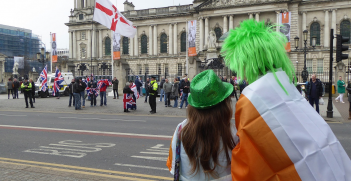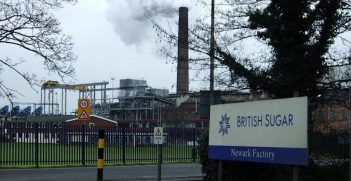Why Some Marriage Equality Campaigns are More Equal Than Others

The Australian marriage equality survey is almost over. So, how has the campaigning compared to others? What took place in the lead up to the positive vote in Ireland two years ago? What explains the differences?
Given the visibility of Ireland’s 2015 referendum on same-sex marriage, comparisons with Australia’s postal survey are unavoidable. Australia’s plebiscite emerged as an option in the months following Ireland’s ‘Yes’ vote and the viability of having such a vote, particularly with regard to the potential negative effects to the mental health of LGBTI Australians, was directly informed by the Irish experience.
‘Australians for Equality’ is led by the political director of Ireland’s ‘Yes Equality’, Tiernan Brady, therefore commonalities in the rhetoric of the yes campaign should not be surprising. However, the course of the campaign in the two jurisdictions diverged as a result of their fundamentally different experiences with participatory democracy.
In 2011, Ireland was in the midst of a fundamental economic crisis, and the new Fine Gael/Labour coalition announced a constitutional convention, as part of a suite of political reforms signalling a ‘new politics’ unlike that which had fomented the crisis.
This convention examined contentious issues, consulted widely with stakeholders and experts, and made recommendations which were to be put to referendum to alter the constitution. Due to the prescriptive nature of the Irish constitution, Ireland has held referenda for decades on social issues such as divorce, abortion and the rights of children, as well as many on European Union treaty proposals. The constitutional convention at the completion of its consultations recommended the legalisation of same-sex marriage and in late 2013, the government announced that a referendum would be held in 2015.
With the consultative and protracted process by which Ireland arrived at the referendum, many of the political questions surrounding same-sex marriage had been part of public discourse for years. By 2013, all the parties represented in the Dáil (Ireland’s lower house of parliament) were in favour of same-sex marriage. ‘Yes’ posters lining the lamp posts in cities and towns all over Ireland bore the logos of all political parties, and canvassers handing out leaflets were drawn from all parties.
Of course, there were ructions in the political class. In the days following the referendum, Senator Averil Power, a high-profile ‘Yes’ campaigner from the lead party in opposition, Fianna Fáil, resigned citing discontent with the party’s reluctant approach to the campaign. Nonetheless, while seemingly many Fianna Fáil members of the Dáil were opposed to same-sex marriage, the political climate and the process by which Ireland arrived at a referendum were such that they did not break ranks with the position of the party at large.
The prominent voices in Ireland opposing marriage equality were mostly members of the right-wing commentariat—columnists for the establishment newspaper the Irish Times, and patrons of conservative Catholic lobby groups or issue-specific campaign groups set up for the campaign. Fewer than 10 national politicians (out of 220) publicly announced that they voted against the proposal.
The contrast with Australia in this sense could not be starker. Whereas Ireland’s referendum arose out of a necessity to alter the constitution, Australia arrived at a postal survey specifically out of a political impasse seeking to defer the decision-making from the parliament. Ireland’s referendum had the legal effect of altering the constitution and requiring the government to act, something not shared by Australia’s postal survey.
Ireland has voted regularly on social issues in recent years, with referenda forming a key part of Irish political culture. With Australia’s most recent referendum having been held in 1999, this could hardly be said to be the case.
The legitimacy afforded to the Australian ‘No’ campaign by two former prime ministers—John Howard and Tony Abbott—saw no comparison in Ireland, and the importance of this can’t be overstated. The familiarity and trust which citizens place in figures such as these lends an enormous level of credibility to their arguments and provides an ability to deflect criticisms based on accusations of prejudice or modern political correctness.
A prominent theme in both campaigns has been the conflation of same-sex marriage with other proposals. When some activists removed ‘No’ posters from lamp posts in Ireland, a prominent narrative arose in the national media that those with oppositions to same-sex marriage felt silenced. The perceived efficacy of this narrative has clearly informed and encouraged the use of the ‘It’s OK to Vote No’ slogan in Australia, and the comments by Tony Abbott in the early days of the campaign, “If you’re worried about religious freedom and freedom of speech, vote no, and if you don’t like political correctness, vote no”.
In Ireland, a group called ‘Mothers and Fathers Matter’ sought to raise questions about the impact of same-sex marriage on the state’s surrogacy laws and adoption arrangements—neither were affected. Some Australian ‘No’ campaigners who are also critics of the ‘Safe Schools’ program have similarly sought to align the issue of marriage with gender theory or questions around parental choice. This was paralleled at least in some sense in Ireland when volunteers from the charity ShoutOut, which organises anti-bullying workshops focused on homophobia and transphobia, were turned away from a pre-arranged workshop in a South Dublin secondary school as some parents objected.
The emphasis on the personal experiences of LGBTI people in convincing would-be voters to vote ‘Yes’ was also shared to an extent between Ireland and Australia. Ireland’s current taoiseach (prime minister) Leo Varadkar came out as gay in an interview before the referendum and during the campaign many high-profile Irish figures spoke publicly about their sexuality, having blamed their silence on the confines of a conservative Irish establishment. While many public figures, such as Ian Thorpe and Magda Szubanski, have been campaigning visibly and speaking of their experiences, the sheer scale of this catharsis as seen in Ireland would be difficult to replicate, considering the closeness between church and state.
In Ireland, the political unity on the issue enabled lively public celebrations and speedy legislation to conclude the matter. While the polling suggests that when the results are known, the Australian ‘Yes’ vote will be victorious, it is unlikely that the political work of campaigners will end, as ongoing division on the issue in the Coalition may not permit a swift and unifying resolution to the campaign.
Fionn McGorry is a former intern at the AIIA National Office. He is also a recent graduate in history and political science from Trinity College in Dublin, Ireland.
This article is published under a Creative Commons Licence and may be republished with attribution.





